Writing Assessment Report Samples
-
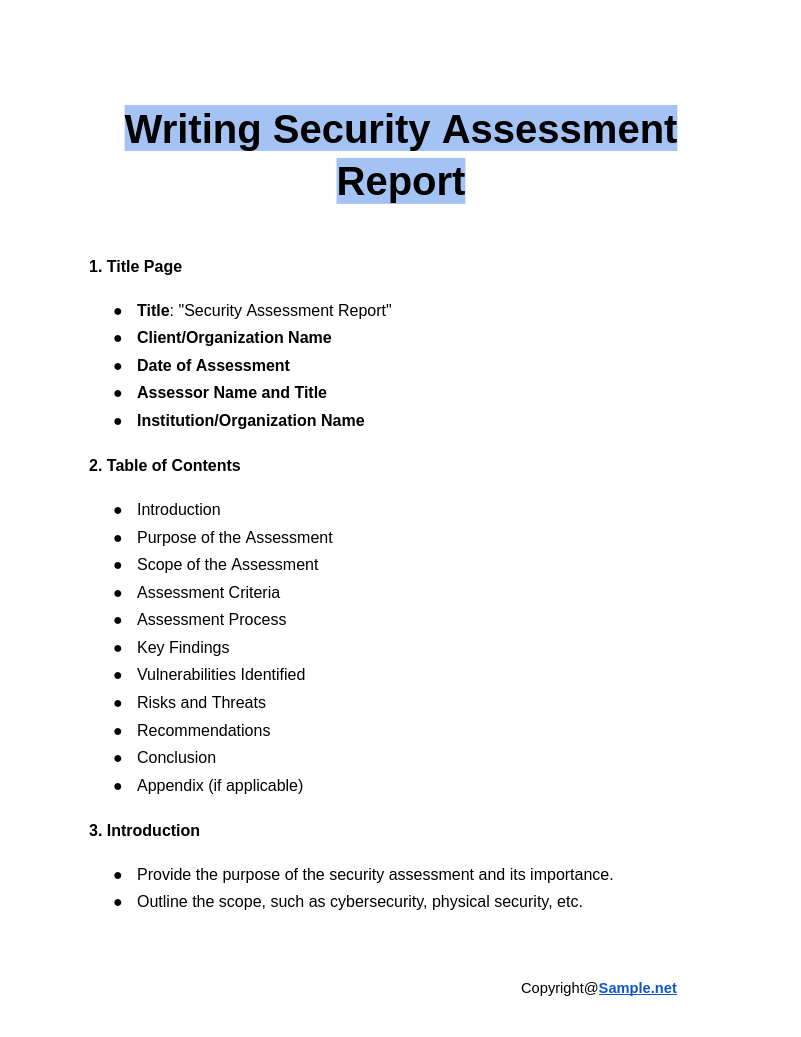
Writing Security Assessment Report
download now -
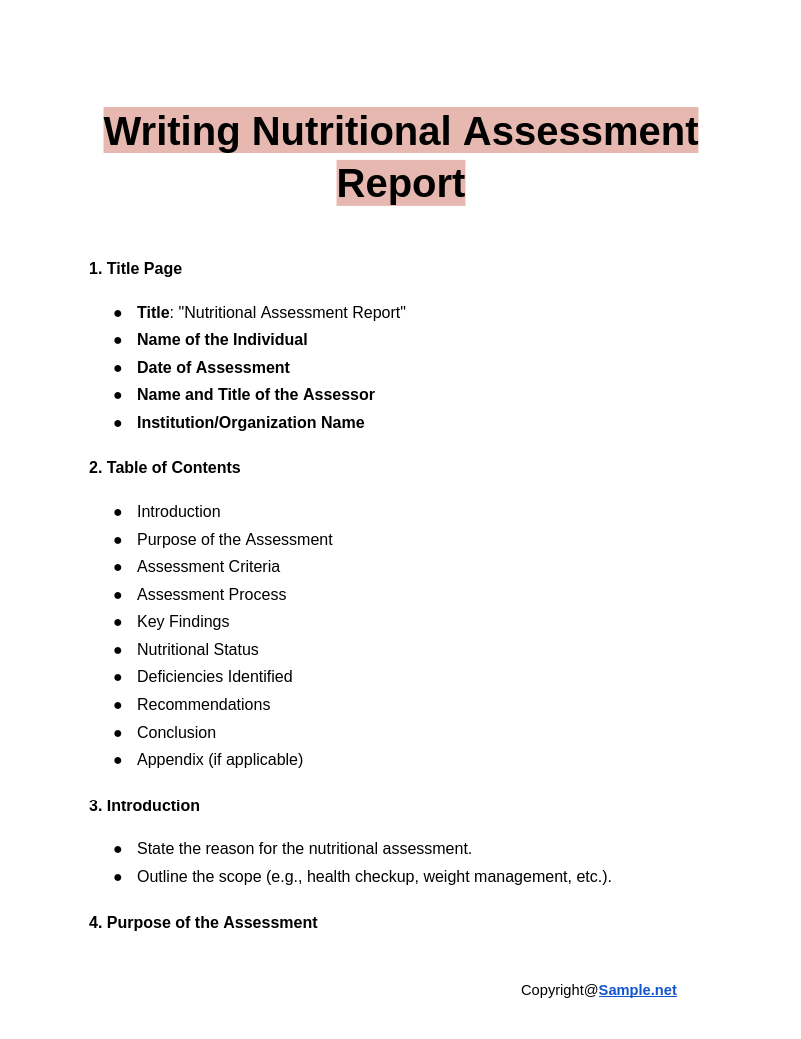
Writing Nutritional Assessment Report
download now -
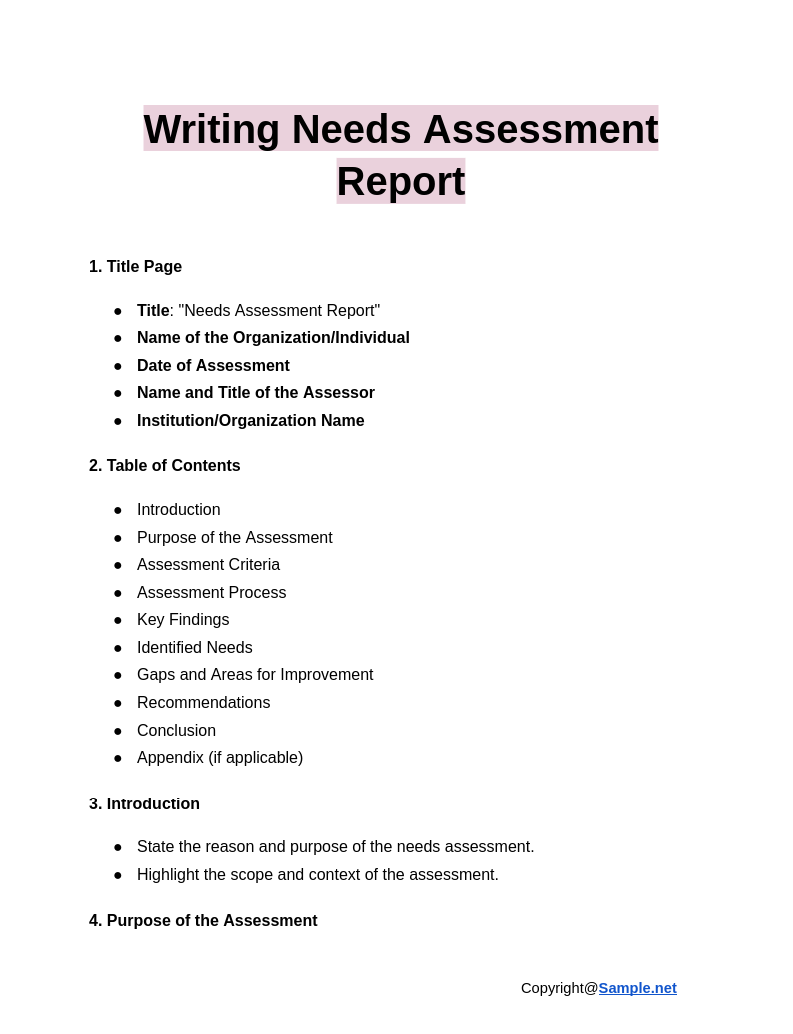
Writing Needs Assessment Report
download now -
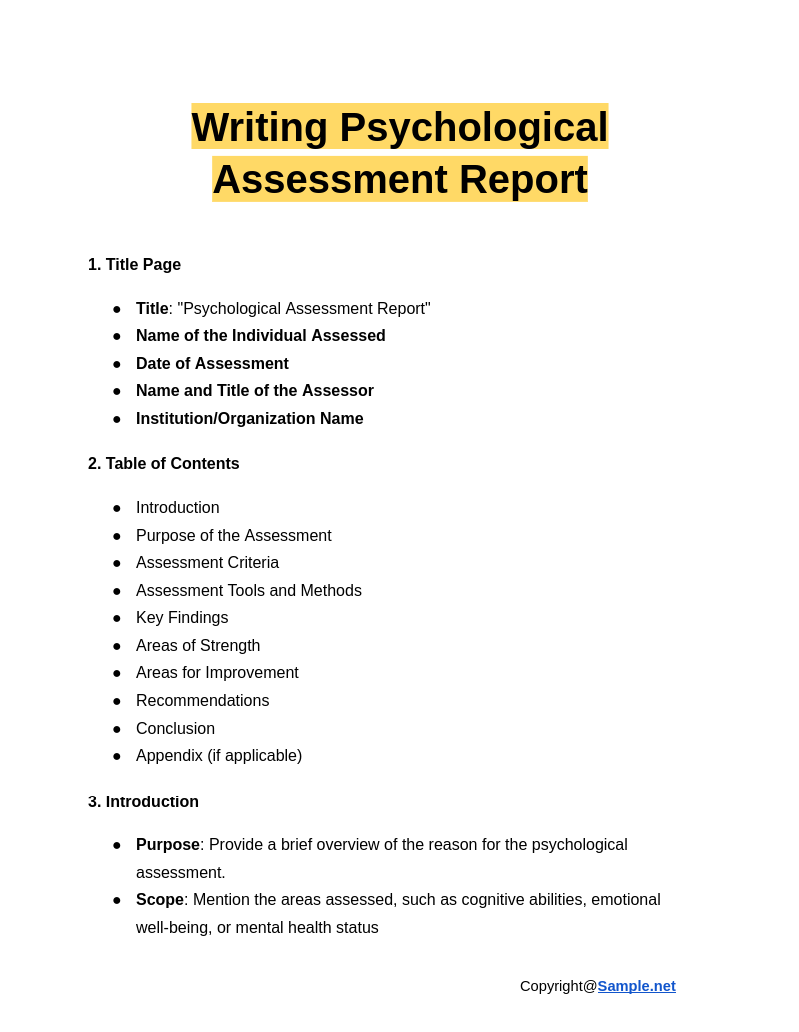
Writing Psychological Assessment Report
download now -
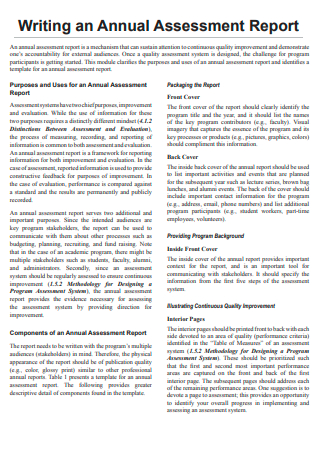
Writing Annual Assessment Report
download now -
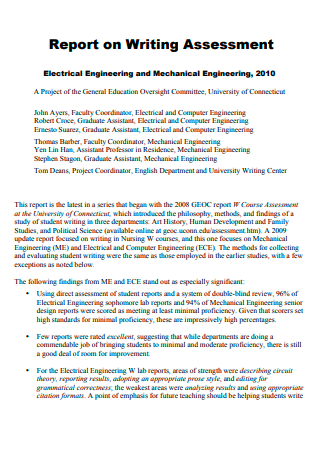
Writing Assessment Report Example
download now -
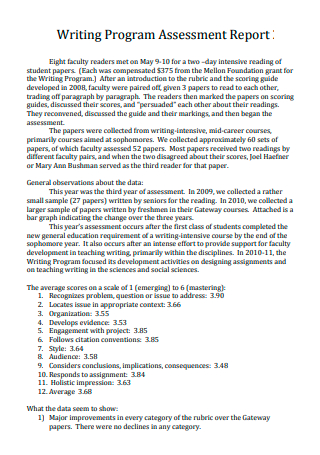
Writing Program Assessment Report
download now -
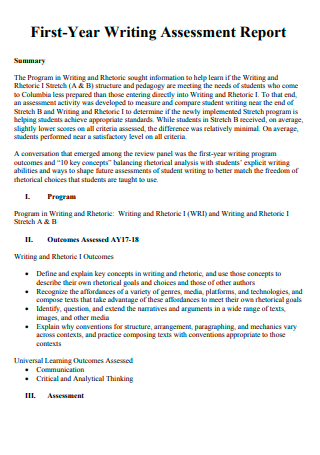
First Year Writing Assessment Report
download now -
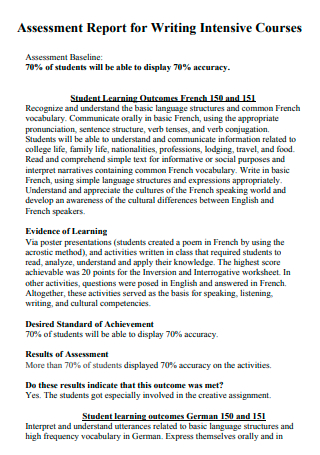
Writing Intensive Courses Assessment Report
download now
FREE Writing Assessment Report s to Download
Writing Assessment Report Format
Writing Assessment Report Samples
What is a Writing Assessment Report?
Benefits of Writing Assessment Report
How to Write a Writing Assessment Report
FAQs
How is a College Writing Differs?
What Can Make Me a Better Writer?
What are the key components of a Writing Assessment Report?
What types of skills are assessed in a Writing Assessment Report?
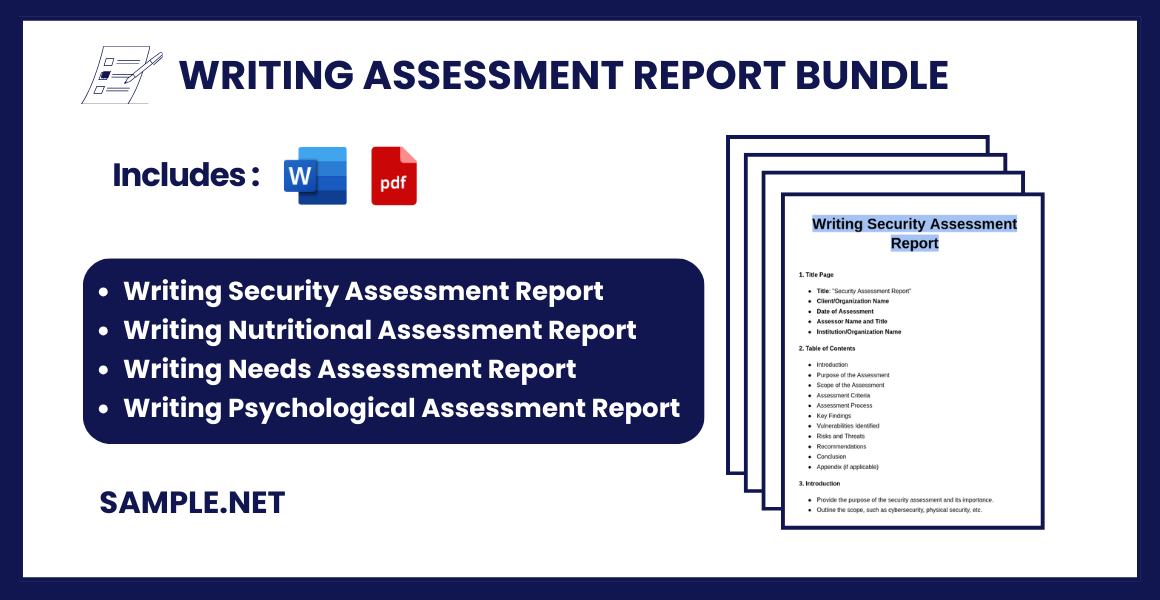
Download Writing Assessment Report Bundle
Writing Assessment Report Format
1. Title Page
- Title: “Writing Assessment Report”
- Name of the Student/Individual Assessed
- Date of Assessment
- Name and Title of the Assessor
- Institution/Organization Name
2. Table of Contents
- Introduction
- Purpose of the Assessment
- Assessment Criteria
- Assessment Process
- Writing Samples Used
- Key Findings
- Areas of Strength
- Areas for Improvement
- Recommendations
- Conclusion
- Appendix (if applicable)
3. Introduction
- Purpose: State the objective of the report and the importance of assessing writing skills.
- Scope: Briefly mention the scope of the assessment, including the time frame and context (e.g., academic, professional, or general writing skills).
4. Purpose of the Assessment
- Clarify why the assessment is being conducted (e.g., to improve academic performance, evaluate readiness for a job role, etc.).
- State how the results will be used (e.g., for training, feedback, or grading).
5. Assessment Criteria
- Clarity and Coherence: Logical flow and clarity of ideas.
- Grammar and Mechanics: Use of correct grammar, punctuation, and spelling.
- Vocabulary and Word Choice: Use of appropriate vocabulary and language for the context.
- Structure and Organization: Paragraph structure, introduction, body, and conclusion.
- Creativity and Originality: Level of creativity and originality displayed in the writing.
- Adherence to Guidelines: Compliance with given instructions, format, or style guide (if applicable).
6. Assessment Process
- Writing Tasks Used: Describe the specific writing tasks the individual completed (e.g., essay, letter, report, or creative writing piece).
- Method of Evaluation: Indicate if the assessment was done manually, using a rubric, or with the help of digital assessment tools.
- Rubric/Scoring System: Provide details on how the score was calculated (e.g., a 5-point or 10-point scale for each category).
7. Writing Samples Used
- List and describe the specific writing samples that were used for the assessment (e.g., “A 500-word essay on climate change” or “A formal business letter for a job application”).
- If possible, provide brief excerpts of these samples to illustrate points made in the report.
8. Key Findings
- Summary of Scores: Present a table or summary of the scores achieved for each assessment criterion.
| Criteria | Score (out of 10) | Comments |
|---|---|---|
| Clarity & Coherence | 8/10 | Clear ideas, but transitions could improve |
| Grammar & Mechanics | 7/10 | Minor punctuation errors |
| Vocabulary & Word Choice | 9/10 | Excellent vocabulary usage |
| Structure & Organization | 8/10 | Well-structured paragraphs |
| Creativity & Originality | 9/10 | Demonstrated creative ideas |
| Adherence to Guidelines | 10/10 | Followed all instructions |
9. Areas of Strength
- Clarity and Coherence: Highlight aspects where the writing was clear, easy to follow, and logically connected.
- Vocabulary and Word Choice: Note the individual’s use of precise, effective vocabulary.
- Creativity and Originality: Highlight any creative ideas, perspectives, or approaches taken in the writing.
10. Areas for Improvement
- Grammar and Mechanics: Mention any specific grammatical, punctuation, or spelling issues.
- Structure and Organization: Suggest improvements related to paragraph organization, flow, or overall structure.
- Clarity and Coherence: Indicate areas where ideas may have been unclear or disjointed.
- Adherence to Guidelines: Highlight any failure to follow the format, word count, or other instructions.
11. Recommendations
- Provide actionable recommendations on how to improve the writing skills of the individual.
- Offer practical steps like:
- Practice more essay writing on specific topics.
- Use grammar-checking software to identify and correct errors.
- Attend writing workshops or seek feedback from a mentor.
- Read more books, articles, or blogs to enhance vocabulary and writing style.
12. Conclusion
- Summarize the overall assessment results, including the student’s or individual’s strengths and areas for improvement.
- Reiterate how the assessment can contribute to their growth in writing skills.
- Offer final remarks or recommendations for follow-up assessments.
13. Appendix (if applicable)
- Include any supporting documents, such as copies of writing samples, assessment rubrics, or raw score sheets.
- This section can also contain detailed feedback notes for each sample.
What is a Writing Assessment Report?
Writing assessment is the assistance that is given to students in grading them in their writing courses. It can be used in different purposes. It is done for the classroom or it can certify proficiency for the students that can be used on the outside. It is also used in grading the students for award purposes. This context has some sound principles on how the grade can be given. Usually, there is a writing assessment report that is done with it. A writing assessment report is the sum of the observation about the evaluation report of the writing ability of a student. The report tells the result of the measure of skills that is illustrated in writing. The written literacy is being evaluated by the current teachers and sometimes by future teachers that reinforce teaching practices on language learning. This report is important because we can discover our capacities that we actually have in writing. The criteria can give some reflection of the nature of our writing, whether it is good or bad. The report will be a performance review for our writing, showing how skilled we are in this thing. Peers can also give us an assessment and sometimes, self-assessment is possible. The assessment is a test that can assert whether we have enough ability to write effectively. That is why a writing assessment report is necessary in all writing and rhetoric courses.
Benefits of Writing Assessment Report
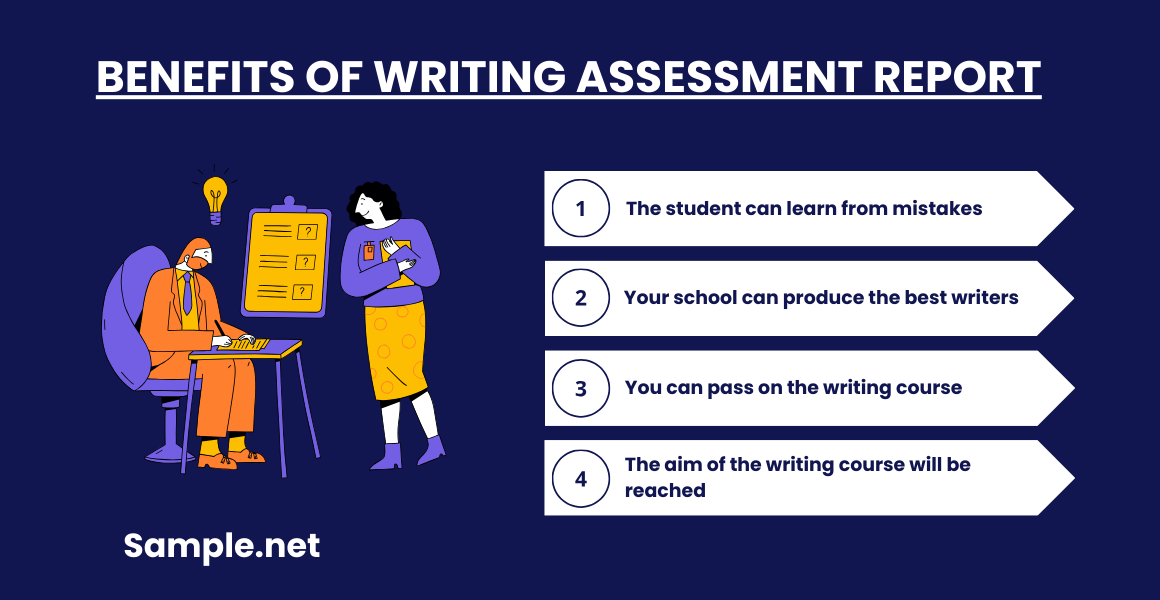
Have you seen an example of writing assessment? Reading an assessment writing examples can give you an idea what a writing assessment report is all about and why it is done. In case, you want to know its benefits, here are some of them:
How to Write a Writing Assessment Report
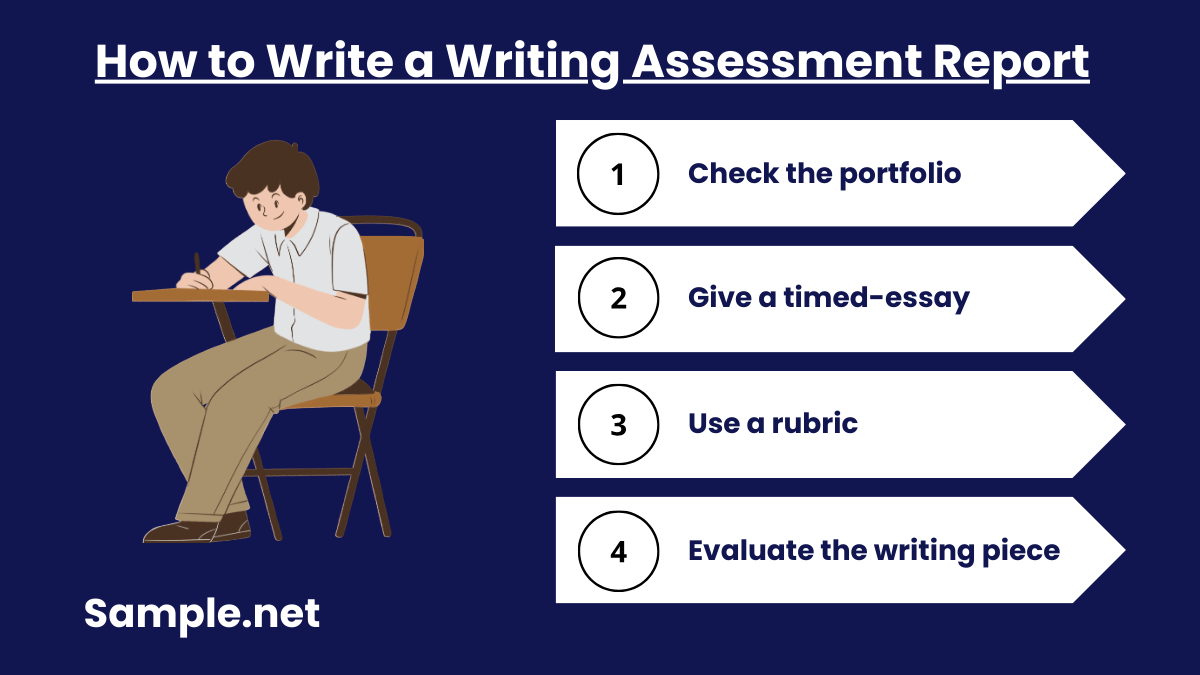
An assessment report sample or assessment report sample for students can make you to write a writing assessment report. But in case you do not have examples to use, you can use the following steps in making a writing assessment report:
Step 1: Check the portfolio.
Conduct a portfolio assessment so that you can assess the true writing skills of the students. Course portfolio may consists multiple writing examples from students and it can help you to evaluate their skills. One single piece of writing is not enough to grade a student’s ability. You may need more work so you can decide better. Ask for reflective letters or essays that can describe their capacity. The portfolio should consist of final drafts. The students can submit a printed portfolio or an electronic portfolio. The advantage of an electronic portfolio is that it has hyperlinks that can enhance their works. After the student submitted a portfolio, check it carefully and use the assessment criteria so that you can evaluate it rightfully.
Step 2: Give a timed-essay.
If you want to have an actual test of the ability of the students, you can give a timed-essay exam that can bring out their writing skills. Choose a good topic or subject for the essay. Give a word count for the essay, something that will be enough for the time that you will give. Before the student will start writing, you can tell them the criteria that you will use in grading the essay. Give enough time for the students to write at their best. After the test, you can use it with their portfolio to have a writing assessment for them. You have two best resources that you can use for assessment. One that can showcase their versatility, and one that mirrors their true skills. With the two resources, you may have enough evidence for their writing abilities. You can also see more on Evaluation Report.
Step 3: Use a rubric.
Rubric is a good thing that you can use in writing assessment. It includes criteria that can guide you on how to rate a writer. Even in the 20th century, rubrics are used to standardize education. There are five factors in rubric that is used in writing assessment. They are the following:
- Ideas – The relevance of the writing will be defined according to the topic. Persuasiveness is considered and the writing should be clear.
- Wording – You will rate the writing according to the choice of words and how the students arranged each sentences. You will rate the flow of sentences, whether they are written in a good way.
- Form – The way that the ideas are organized will also be graded. The writing should have right and proper analysis that is related to the topic.
- Mechanics – Of course, there is a criteria where you will grade the grammar and punctuation of the writing. It should be free from all errors or it can affect the rate that you can give for it.
- Style – You will rate the way on how the students write the concept. You will also grade the sincerity of the writing piece and the interests that it can share.
Step 4: Evaluate the writing piece.
The purpose of written assessment is to evaluate the skills of students. Any types of written assessment can be evaluated better after having the rubric and the materials that you have to evaluate. Using all the criteria, make an accurate assessment after reading the written pieces that the students have made. Evaluate the portfolio and grade the creative side of the students with the test. You can tell their performance through the pieces that they have submitted. Make a performance review using the resources that you have and rate them according to a rubric that can help you in assessment. Then, prepare a document and start to make a report about your assessment. Include the rate that you have come up with and put some feedback that can be helpful for the students. Read the report and ensure that it meets the standard of language learning. After you see that everything is fine, you can give the assessment to the faculty. You can also see more on Psychological Assessment Reports.
FAQs
How is a College Writing Differs?
College writing is ‘academic writing’ that is done in college. It involves a great deal of analysis than other kinds of writing. Usually, you will make a research paper, academic essay, or multimedia report. It is more difficult and more comprehensive. You even have to follow some writing style. College writing may lead to professional writing opportunities. You can also see more on Training Report.
What Can Make Me a Better Writer?
Practice can help you a lot to be a better writer. In your spare time, write and write so that you can train yourself. You should learn also how to heed to instruction. This will make you to write at your best always. You also have to be creative in reflection. You have to come up with good ideas that you can write. Good reflection can make you to write good words that can entertain any readers.
What are the key components of a Writing Assessment Report?
Key components include an introduction, evaluation of writing criteria, feedback, recommendations, and a conclusion.
What types of skills are assessed in a Writing Assessment Report?
Skills such as grammar, vocabulary, coherence, clarity, and logical flow are assessed in a Writing Assessment Report. You can also see more on Supervisor Report.
